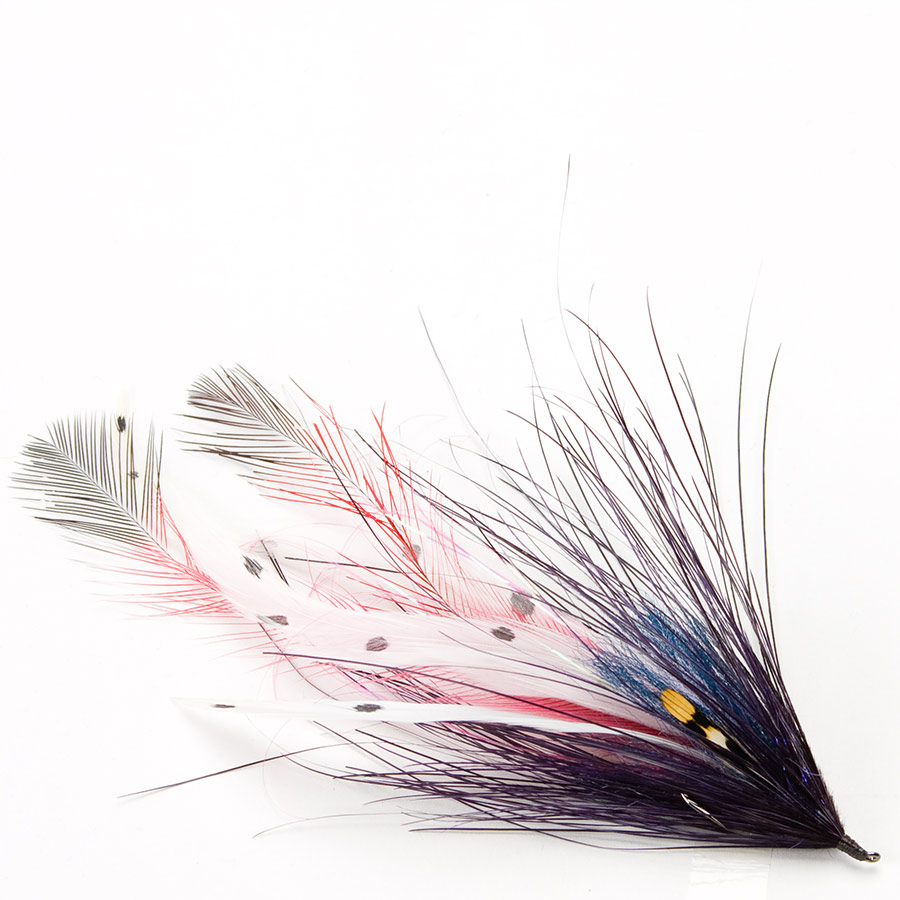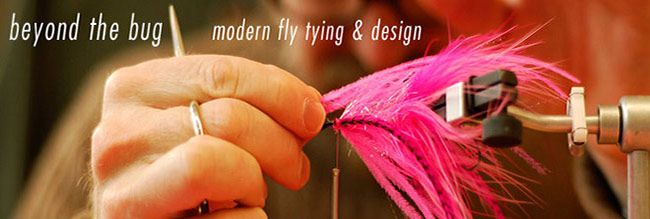We've had about a zillion requests for a fly recipe for the squid fly featured in our very first post. You'll find the recipe and material list below. Detailed tying instructions can be obtained via email at beyondthebug@gmail.com
Calimari con Super Spey, a squid fly for steelhead and stripers >>

Hook >> Tiemco TMC 7999 #1/0
Thread >> Wapsi UTC GSP 200 deneir, white (colored with Prismacolor art marker)
Tentacles 1 >> 2 or 3 red emu feathers (best quality is from Siskiyou Aviary in Ashland, Oregon)
Tentacles 2 >> 2 or 3 saltwater saddle feathers (white, dotted with Prismacolor art marker)
Tentacle highlights 1 >> Spirit River Pearlescent Fly Flash, pink
Tentacle highlights 2 >> about 10 strands of Spirit River Crystal Splash, purple and pearl
Head 1 >> EP Fibers by Enrico Puglisi, lavender and navy blue stacked 360-degrees around the shank
Eyes >> 2 matched Spirit River Jungle Cock Nail Feathers
Eyes >> 2 matched Spirit River Jungle Cock Nail Feathers
Dubbing >> Spirit River Diamond Brite Dubbing, UV pearl
Head 2 >> Paul Miller Super Spey rhea feathers, gentian purple
Evan LeBon is a regular contributor to beyondthebug.com
photo provided by Ian McNemar, a regular contributor to beyondthebug.com
Evan LeBon is a regular contributor to beyondthebug.com
photo provided by Ian McNemar, a regular contributor to beyondthebug.com











